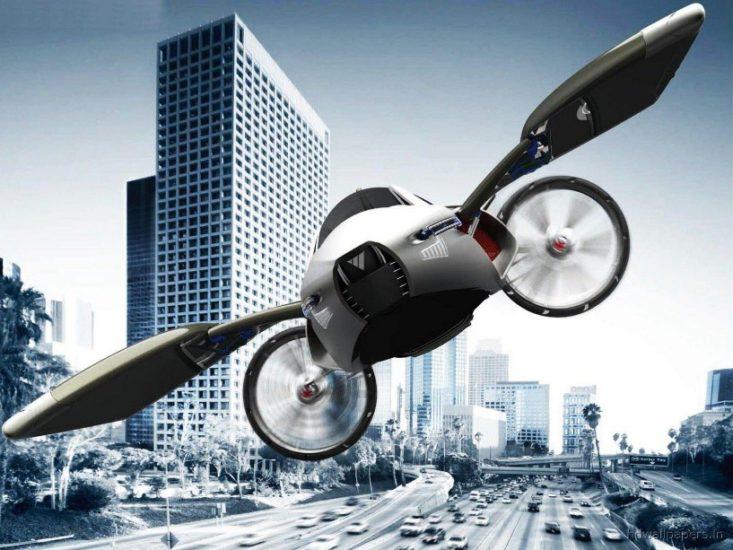When Will There Be Flying Cars?
10 Things on the UAM To-Do List

When it comes to urban air mobility (UAM), flying cars, eVTOLs, if you will, people want to know: “When will there be flying cars?” Good question.
Clearly, (pardon the pun) the wheels are in motion. But the question becomes, what has to happen before some of us, let alone all of us, are airborne in a flying taxi or even our own personal air land vehicle as eVTOL developer PAL-V calls it.
Here are the 10 things that need to happen before we’re cutting our commute times, getting our packages delivered by drones, and reducing pollution with all-electric fleets of flying cars.
1. ATC has to up its game
The number of vehicles in the sky will increase exponentially when UAM takes off. Air traffic control (ATC) systems will need to scale dramatically to manage thousands more flights on a daily basis, not just in the developed world, but in the developing world.
People in the developing world got mobile phones before they had landlines. Who’s to say the same won’t happen with urban air mobility?
2. ATC has to broaden its horizons
Just because there will be a whole new class of aircraft traversing the airspace doesn’t mean existing aircraft traffic will go away. ATC will need to adjust to accommodate today’s airplanes and helicopters and the next generation – eVTOLs, drones, hybrids – simultaneously.
The U.S.’s FAA and NASA, the EU’s EASA, and their counterparts in Asia – South Korea and Japan, for example – are preparing to do that. They see the writing in the sky and are already rewriting their rules and regulations.
3. Commercially available experimental piloted vehicles
Before Boeing, before Airbus, before Joby, Skydrive, Hyundai, or GM can start selling a vehicle for use in urban, suburban, or even rural skies, they will need to make piloted versions available commercially. Whether it’s existing airlines or new carriers, they will need a steady source of vehicles for their fleets to be economically viable.
4. Full automation
In 2018, a Tesla being operated on autopilot crashed. Tesla had recommended (and still does) that drivers keep their hands on the steering wheel while the car is driving itself. (The driver did not have his hands on the steering wheel. He was playing a video game at the time of the crash.) But, until eVTOLs or hybrids are fully and reliably automated, sales could be sluggish.
Not everyone can run the 100-meter dash in 9.58 seconds, not everyone can solve E = mc2. But most of us can drive a car. Flying a car will have to be as simple.
5. Low, or No, Noise Flying Vehicles
The vast majority of UAM vehicles under development are rotorcraft. Rotors are noisy. People don’t like noise like that (certainly not at commercial-scale operations) in their neighborhoods, over their homes.
If UAM is to succeed, it will need to be acceptably quiet. A fleet of drones crisscrossing residential streets dropping off packages while sounding like a scourge of mosquitoes (yes, they’re called a scourge) will be annoying and probably regulated out of existence in less than 30 days from the first complaint.
6. Affordability of Flying Cars
Some estimates put the cost of an unmanned aerial vehicle, let alone a piloted one, in the hundreds of thousands of dollars. Before Henry Ford figured out how to mass-produce cars, they were for the well-to-do only. That’s no way to get an industry off the ground. Mass production yielding vehicles at reasonable prices will need to happen for UAM to succeed.
7. Safety, Reliability, Simple Maintenance
Today’s aircraft are safe and reliable. Easy to maintain, not so much. Cars are safe, reliable, and there’s a mechanic ready to service vehicles within minutes of most people’s homes. UAM vehicles will need to demonstrate levels of safety and reliability at least equal to today’s cars. And, neighborhood mechanics to give them a tune-up, check the brakes, or grease the moving parts, will need to be near-ubiquitous to enable UAM.
8. Infrastructure to Support Flying Cars
Vertiports, charging stations (and the electricity they need to generate), air traffic management, rules of the road for the sky, licensing, certification – there is a long list of the infrastructure needed to support UAM that must be put in place if an UAM industry will be viable.
9. Next-gen Batteries for Flying Cars
It’s one thing to have an electric vehicle (EV) when it’s earthbound. When batteries have to keep your cargo or you, or both, up in the air, they must be both light-weight and heavy-duty.
Lithium-ion batteries seem to be the solution, but time will tell. Plenty of people, from university-based researchers to corporate scientists, are hard at work tackling this challenge.
10. Public Acceptance of Flying Cars
UAM vehicle developers can tinker and innovate all they want in a lab. But, in the end, if the public doesn’t buy what you’re selling – if there isn’t public acceptance – it doesn’t matter.
People were reluctant to accept cars in the late 19th century. They were equally reticent, if not more so, when the Wright brothers demonstrated their “flying machine” in the early 20th century.
In the 21st century (which is when we were “promised” flying cars), people are more accepting of new technologies; the acceptance of mobile phones, despite early warnings they were cancer-causing, came relatively quickly. They are truly ubiquitous now. It seems likely people will adapt to flying cars, however they’re powered and operated, soon enough.
The final hurdle will soon be cleared.


